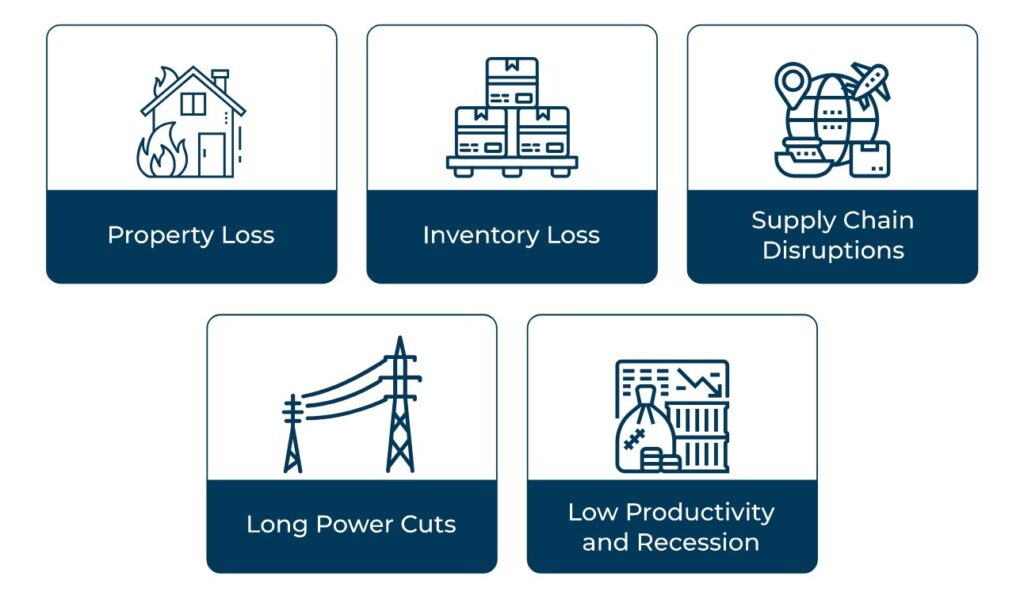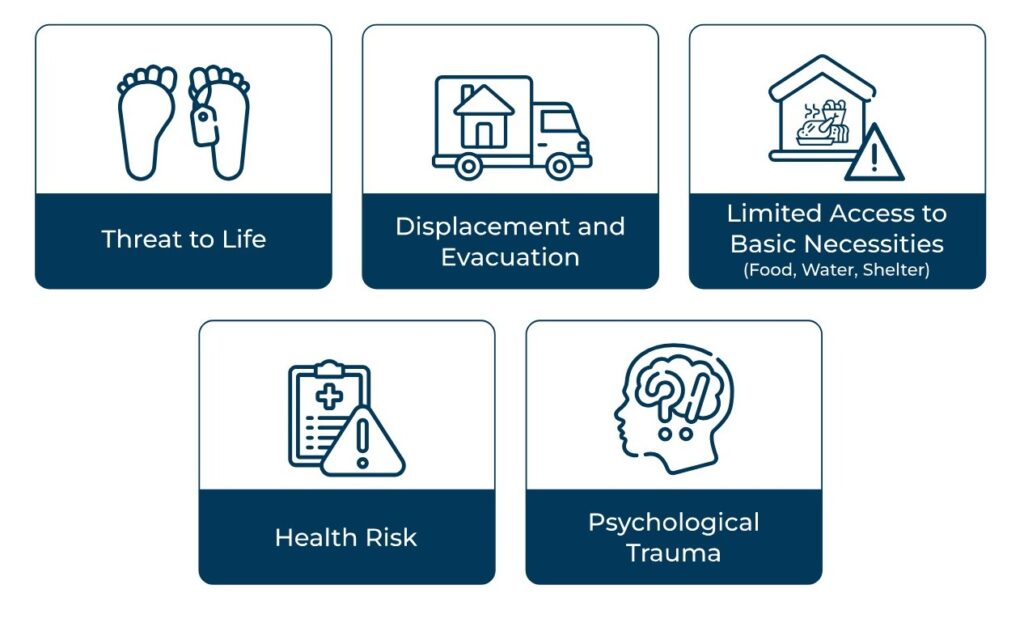A bushfire is a type of wildfire that spreads through bushland and are a common occurrence in areas that experience hot, dry weather, like Australia, Greece, Africa, and parts of the USA, like California. In recent times, changes in climate and land-use have escalated the risk of bushfires. Incidents of extreme fire are expected to increase by 14 percent by 2030 and 30 percent by 2050. Natural phenomena including high temperatures, low umidity, scanty rainfall, dry vegetation, strong winds, and thunderstorms may also intensify the spread.
Generally, bushfires tend to occur during hot and dry period when spread of dry vegetation is at its highest. Given that bushfires are becoming a recurring threat to health and business operations; it is pertinent for organisations to take note of the imminent disruptions and prepare for suitable mitigation measures.
Factors Causing Bushfire
Natural events – lightning strike; friction among dry vegetation; favourable atmosphere for combustion
Manmade events – accidental or irresponsible acts; deliberate acts
Areas prone to bushfires in the APAC

Possible disruptions
General

For Organisations

For Individuals

Recommendations
General
- Be prepared with evacuation routes and emergency contacts.
- Remain updated with latest information and maintain situational awareness.
- Do not panic and spread/give into misinformation. Rely on official sources only for authentic information.

For Organisations
- Take adequate measures to prevent bushfires, such as clearing debris, trimming vegetation, and installing fire-resistant materials.
- Undertake regular safety audits for your facilities.
- Review insurance coverage and have a business continuity plan in place.
- Maintain proper communication channels and ensure that all exits are clear and well-marked.
- Prepare for adequate power and water backups.
- Avoid relying solely on internet as telecommunications may experience disruptions; further it is advised to run regular simulation exercises with your staff especially if operating near bushfire prone zones.
- Revise and update all staff on the organisation’s Duty of Care policies and offer adequate support, especially for those working onsite.
- Advised to consider flexible working arrangements to minimise the impact of disruptions on business operations.
For Individuals
- Identify early indicators like Total Fire Bans or high-risk bushfire weather forecast and consider leaving before roads get blocked.
- Prepare an emergency kit comprising of dry food, basic first-aid, money, portable charger, and emergency contact numbers.
- Keep important IDs and documents at safe and accessible locations.
- Stock up on medications and ration.
- Keep emergency lights, torches, and cells handy.
- Store and use water judiciously.

Emergency Information Support
Australia
- Emergency Contact Number – 000
- Bushfire Information and Support
- Live Bushfire Prone Map
- For specific and local informatic, refer to MyCouncil, Department of Local Government, Support and Cultural Industries.
New Zealand
- Emergency Contact Number – 111
- For online services – Fire Emergency New Zealand
Thailand
- Emergency Contact Number – 199/191
Philippines
- National Disaster and Risk Reduction and Management Council TEL: (02) 911-1406, (02) 912-2665, (02) 912-5668
Indonesia
- Emergency Contact Number – 112
- Fire Department – 113
- Search and Rescue – 111,115,151
Malaysia
- Malaysia Emergency Response Services (MERS) – 999



